The hand held dewpoint meter can test the ambient temperature of -10~60℃, and can also accurately measure the dew point temperature in the range of -50~30℃. It has a high-quality sensor that can withstand condensation and does not worry about condensation affecting measurement accuracy.
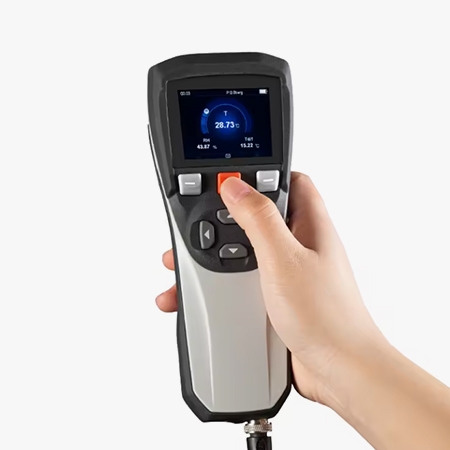
Powerful Functions
- The dew point thermometer has a wide measurement range, including relative humidity, dew point, water vapor PPM, temperature and air pressure, etc. The sensor withstands condensation and anti-condensation, with multiple functions.
- Power display, using 3000mAh rechargeable lithium battery, 5V charging interface.
- Flexible data recording function, customizable automatic recording time interval, every 1000 sets of data can automatically generate a file, and up to 32 CSV files can be saved.
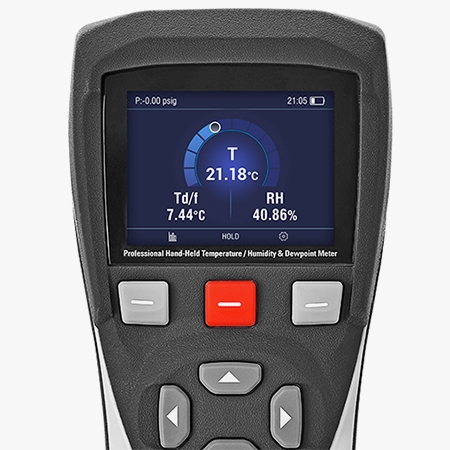
Easy to Operate
- Color screen design, intuitive and simple interface, with power display function.
- Use USB to connect to the computer, data transmission is convenient and fast.
- The probe can be purified by heating and drying the sensor to obtain more accurate measurement results.
Applications
In the agricultural field, dew point meters are mainly used to monitor humidity in greenhouses, providing a suitable environment for the growth of crops, and thereby improving the yield and quality of agricultural products. In industrial production, dew point thermometers are essential for monitoring and controlling humidity in the air. In environmental monitoring, handheld dew point meters can be used to monitor changes in humidity in the atmosphere and provide important data for climate change research. With the development of sensor technology and signal processing technology, the measurement accuracy of dew point meters will continue to improve and meet more stringent measurement requirements.
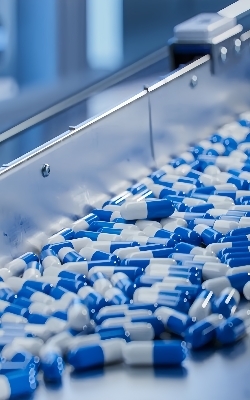
Chemical
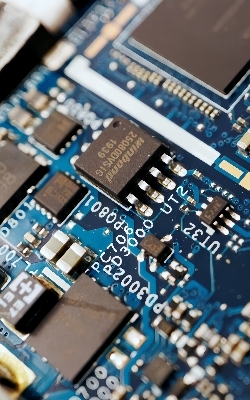
Electronic Component
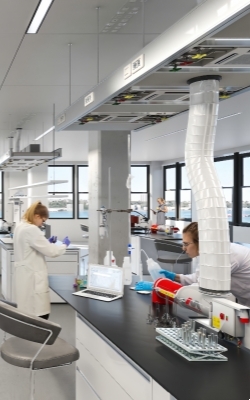
Laboratory
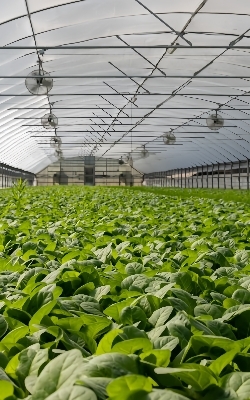
Greenhouse
| Model | SISCO-DPM-DT8321 | |
| Environment Temperature | Measurement Range | -30~100℃ |
| Accuracy | ±0.5℃ | |
| Response Time | Less 10s (at 90% 25℃ still air) | |
| Relative Humidity | Measurement Range | 0~100%RH |
| Accuracy | ±0.5%RH | |
| Resolution | 0.1%RH | |
| Response Time | Less 10s (90% 25℃ still air ) | |
| Dew Point | Temperature Range | -30~100 ℃ |
| Wet Bulb | Temperature Range | 0~80℃ (-4~140℉) |
| Other | Power | A standard 9V or 6F22 battery |
| Operating Environment | 0~40℃ (32~104℉), <80% RH Non - Condensing | |
| Storage Environment | -10~60℃ (14~140℉), <80% RH Non - Condensing | |
| Weight | 200g | |
| Size | 225mm×45mm×34mm | |
Structure Diagram
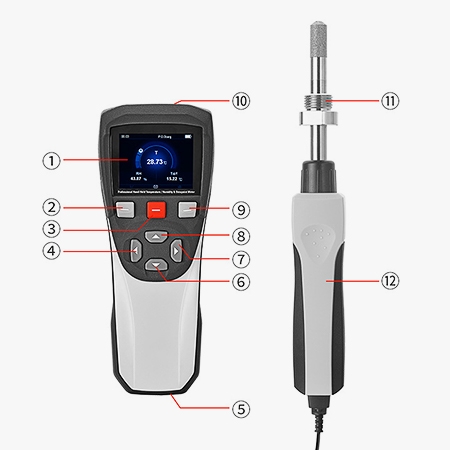
- LCD Color Screen
- Return/Exit
- Short Press to Power ON/Long Press to Power OFF/Hold
- Left Arrow Key
- Interface to Connect Measuring Probe
- Down Arrow Key
- Right Arrow Key
- Up Arrow Key
- Confirm/Select
- MicroUSB Interface
- G1/2" Probe Interface
- Measuring Probe
Q1: What factors affect the measurement accuracy of the dew point meter?
A1: The accuracy and stability of the dew point meter not only depend on the performance of the instrument itself, but are also affected by environmental conditions, its own factors, and the operator. Understanding these influencing factors is very important for the correct use and maintenance of dew point meters, and for improving measurement accuracy.
- Environmental conditions have a significant impact on the measurement accuracy of a dew point meter. These include factors such as temperature, humidity, and air pressure. The influence of temperature on the dew point meter is mainly reflected in the different saturated water vapor pressures of air at different temperatures, so measurements need to be carried out under constant temperature conditions. Humidity is an important indicator of the moisture content in the air. When the moisture in the air reaches saturation, the humidity reaches 100%. Changes in air pressure also affect moisture status, so constant air pressure conditions need to be maintained during measurements.
- The performance of the instrument itself also has a great impact on measurement accuracy. For example, sensor sensitivity, response time, and stability are all key factors that affect measurement accuracy. In addition, the calibration status of the instrument will also affect the measurement results. Regular calibration is the key to ensuring measurement accuracy.
- The operator's operation method will also affect the measurement results of the dew point meter. For example, during use, severe vibrations and collisions should be avoided to avoid damaging the precision components inside the equipment. During measurement, appropriate gas flow should be controlled to avoid measurement errors caused by excessive flow.
Q2: How often should a dew point meter be calibrated?
A2: As an important humidity measurement device, the calibration cycle of a dew point meter is crucial to ensure the accuracy and reliability of the measurement data. According to the search results, the calibration cycle of a dew point meter varies according to different usage and environmental conditions. Generally, it is recommended that users check the dew point meter every two years, while in some cases (such as when the gas path is severely contaminated), it is recommended to check it every six months. Dew point transmitters should be calibrated once a year. Proper calibration and maintenance can greatly improve the measurement accuracy and stability of the dew point meter, thereby ensuring the quality and safety of related industrial processes.
Q3: How to clean the probe of a dew point meter?
A3: How often the probe of a dew point meter needs to be cleaned depends on a variety of factors, including the environment in which it is used, the frequency of use, the cleanliness of the sample gas, and the specific requirements of the instrument. Here are the steps to clean the probe.
Before you begin cleaning, make sure the device is turned off and disconnected from the power supply. If possible, disassemble easily removable parts.
Use a soft cloth and a mild cleaner (such as diluted detergent) to clean the device housing. Avoid using any corrosive substances that may damage the surface or penetrate into the interior of the device.
The probe is the most critical part of the dew point meter. According to the manufacturer's instructions, some probes may allow for gentle wiping with a soft cloth. If the probe has special cleaning requirements (such as specific cleaning solvents), follow these guidelines.
If the dew point meter is equipped with an air filter, check whether the filter needs to be cleaned or replaced.
After cleaning and drying all parts, reassemble the device and perform a simple functional test to ensure that everything is working properly.
Tips: Advantages of using RC sensor dew point meter
RC sensor is a sensor that uses changes in resistance and capacitance to detect physical or chemical changes and converts them into electrical signals. The working principle is based on changes in resistance and capacitance. When the external environment changes, such as temperature, humidity, pressure, etc., it will affect the resistance and capacitance values of the sensor, and these changes can be detected by other components in the circuit and converted into corresponding electrical signal output. It can provide high-precision humidity measurement and respond quickly to humidity changes. These characteristics enable the RC sensor dew point meter to provide reliable humidity measurement data in various environments.
Thank you for buying industrial test and measurement equipment on SISCO.com, all products sold by SISCO and the partner cover a 12 months warranty, effective from the date of receiving the products.
What is covered?
SISCO is responsible for providing free spare parts, and free technical support to assist the customer to repair the defective products until the problem is solved.
What is not covered?
- Product purchased from anyone other than a SISCO store or a SISCO authorized reseller.
- Expendable parts.
- Routine cleaning or normal cosmetic and mechanical wear.
- Damage from misuse, abuse or neglect.
- Damage from use of parts other than SISCO approved.
- Damage from use outside the product’s usage or storage parameters.
- Damage from use of parts not sold by SISCO.
- Damage from modification or incorporation into other products.
- Damage from repair or replacement of warranted parts by a service provider other than a SISCO authorized service provider.
- Damage caused by the application environment not meeting the product usage requirements and the failure to perform preventive maintenance.

